8scary facts about jaguars
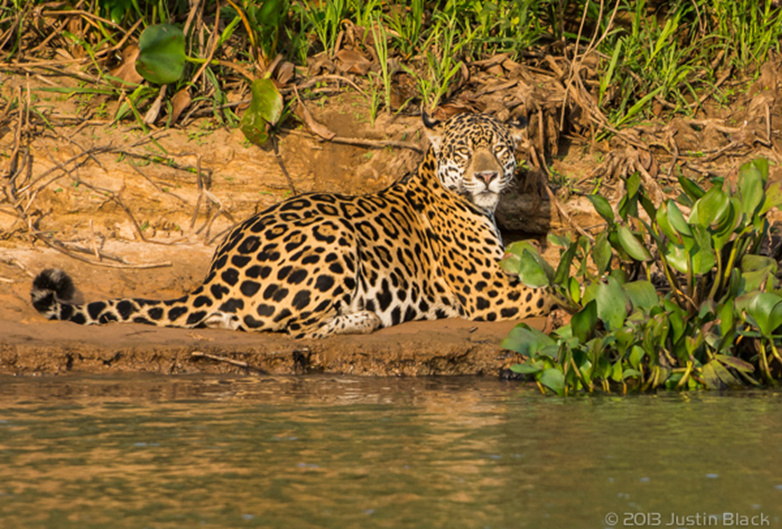
Jaguars are among the most ferocious and aggressive animals in the world, so much so that they are not even afraid to pursue deadly ferocious prey and have no natural predators in the wild to worry about.
What jaguars fear most is humans pursuing them, because of their spotted skin and tusks, which makes them vulnerable to extinction.
Amazing information and facts about jaguars:
Jaguars are one of the largest and most famous predators in the world and are among the most dangerous animals that live in the Amazon rainforest. The jaguar is a skilled hunter and carnivore. It prefers large prey, such as snakes, crocodiles, and cows, including the giant caiman.
Male jaguars can weigh up to 120 kg, while females weigh about 100 kg. The size of a jaguar can vary from one region to another.
The jaguar is the largest member of the feline family. The word "jaguar" comes from the indigenous word "jaguar", which means "one who kills with one leap". November 29 of each year is World Jaguar Day.
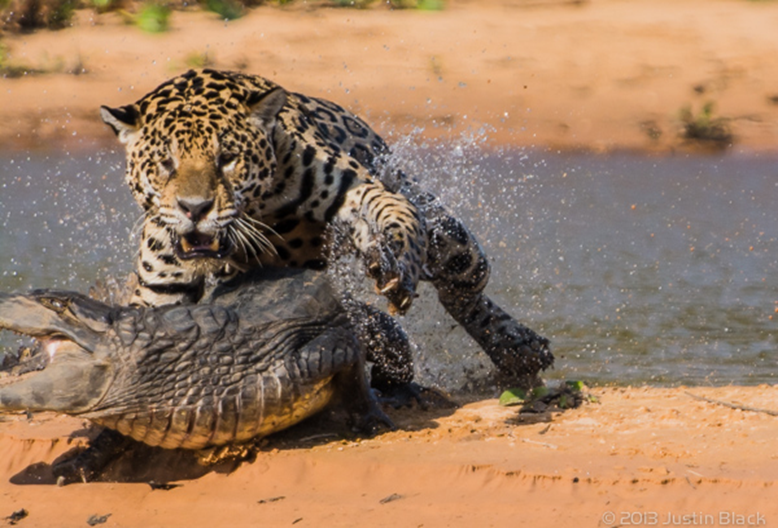
Although their numbers have declined significantly, jaguars used to be found from the southwestern United States and throughout South America to almost as far north as Argentina.
There are about 173,000 jaguars in the world today, and most of these big cats are found in the Amazon rainforest and deciduous forest, the largest of the tropical wetlands. Their stronghold is Brazil - which may contain about half the estimated wild numbers.
Cheetahs can be confused with tigers because they look similar, but you can tell the difference between them by the spots covering their bodies which are known as rosettes because they resemble the shape of a flower. The difference between the jaguar and the leopard, both of which have rosettes, is that the jaguar's rosettes appear in the center of their bodies while the leopard's rosettes do not, and jaguars also have larger, rounder heads, shorter legs, and less agility than leopards.
Jaguars dispel the myth that cats do not like water, these beasts are excellent swimmers and move skillfully in the water, especially when they hunt. Tigers do not let the size of the prey affect their hunting, as big cats chase crocodiles, snakes, and anything that can be preyed upon. They have confidence in swimming and crossing large rivers and lakes.
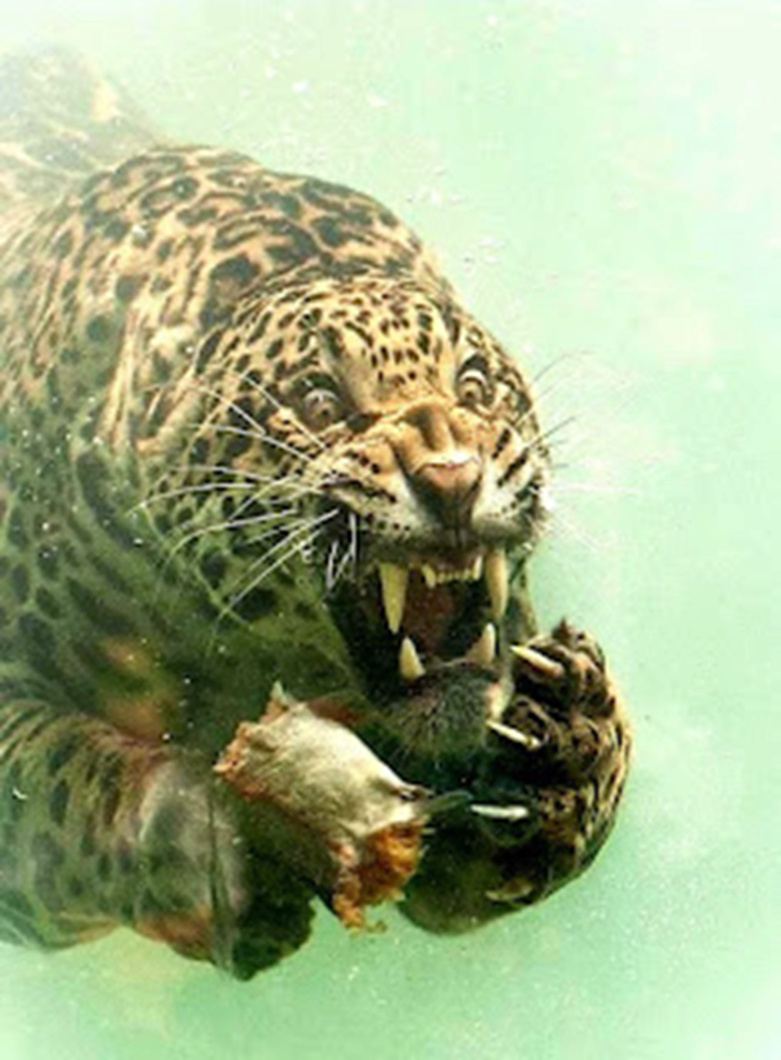
Underwater jaguar catching food
The roar of both males and females is loud, and they use it to show strength and determine their locations and helps bring them together when they want to mate.
When tigers greet each other, or reassure each other, they make a noise like nasal snoring.
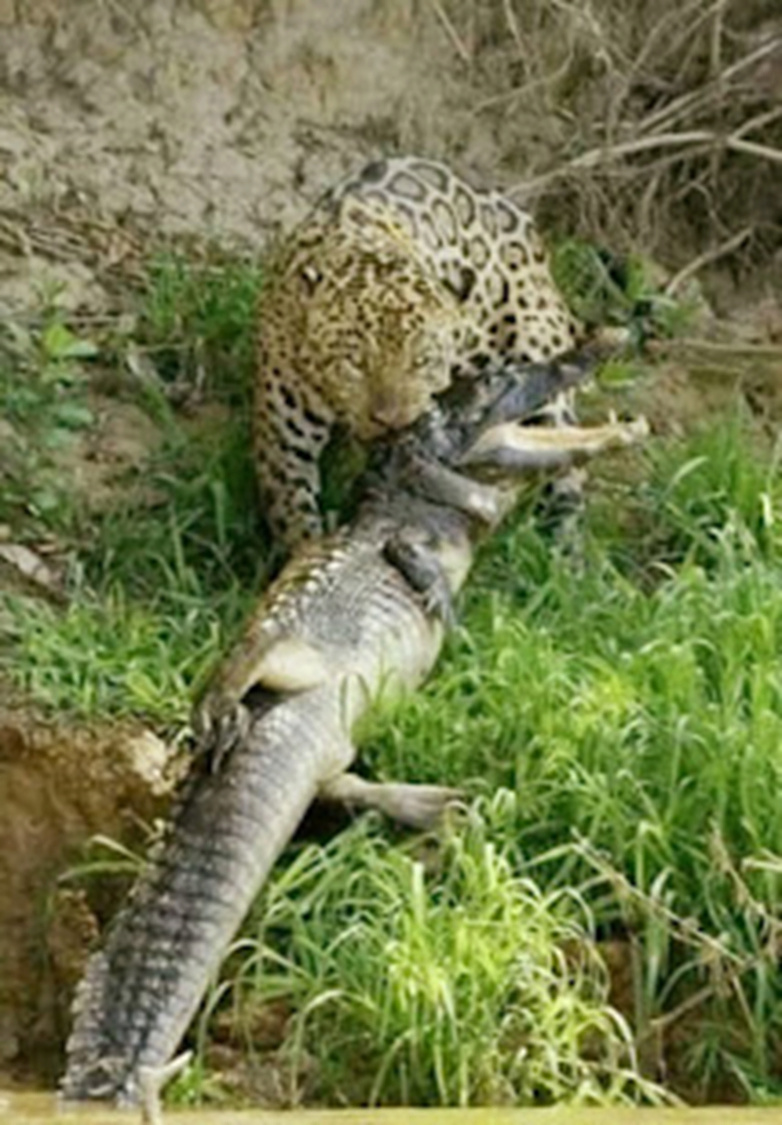
Jaguar
The jaguar is an opportunistic and skilled hunter and eats almost anything and can prey on almost anything they come across, deer, turtles, iguanas, armadillos, fish, birds and monkeys, they can even handle South America's largest animal, the tapir, and huge predators like crocodiles.
Jaguars are big cats that are constantly on the move because they hunt during the day and at night and usually travel up to 10 kilometers at night when hunting.
Jaguars have a stronger bite than any other big cat. Their teeth are strong enough to bite through the thick hides of crocodilians and the hard shells of turtles.

Jaguar
Their powerful teeth, jaws and tusks enable them to control prey three to four times their weight – and they usually kill it with a bite to the back of the skull rather than the neck or throat like other big cats.
Like tigers and lions, the tongue of jaguars has sharp protrusions, called papillae, which are used to scrape meat from bones.
When breeding, a pair of jaguars may mate 100 times a day. Pregnancy lasts about 14 weeks, and then the female usually gives birth to two jaguar cubs (and can give birth to up to four at a time).
Jaguar cubs are very thin when they are born, but they quickly grow up, and at the age of two years, males can be 50% heavier than their female brothers.
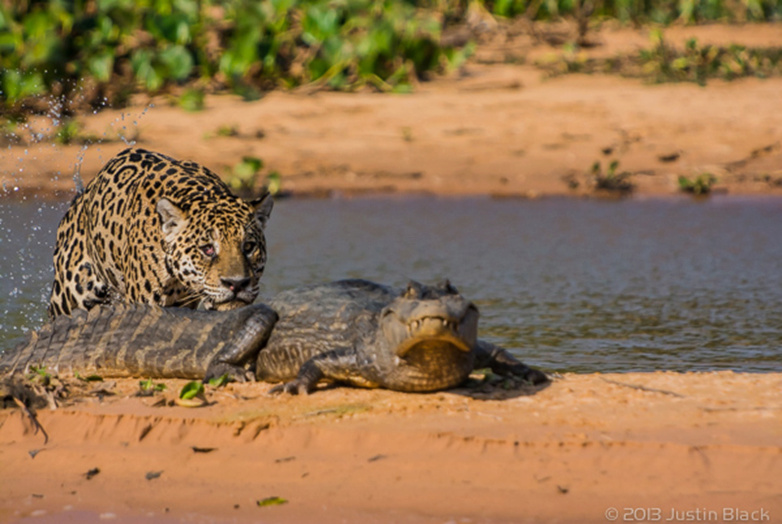
These big cats (the largest in the Americas) are among the fiercest predators and are apex predators with no predators.
The front and back legs of the jaguar are shorter compared to other big cats. The jaguar does not only live in jungles, jaguars can be found across North, Central, and South America.
In fact, tigers are apex predators and have no predators of their own in the wild, only humans and poaching to near extinction for their fur.

Black jaguar
Black or melanistic jaguars are an anomaly in the animal kingdom, the animals get their dark color from high melanin levels which results in darker pigmentation on the skin and fur. Melanistic leopards also exist and look almost identical to black leopards, although technically not black leopards, jaguars are often mistaken for black leopards.
Source : websites

